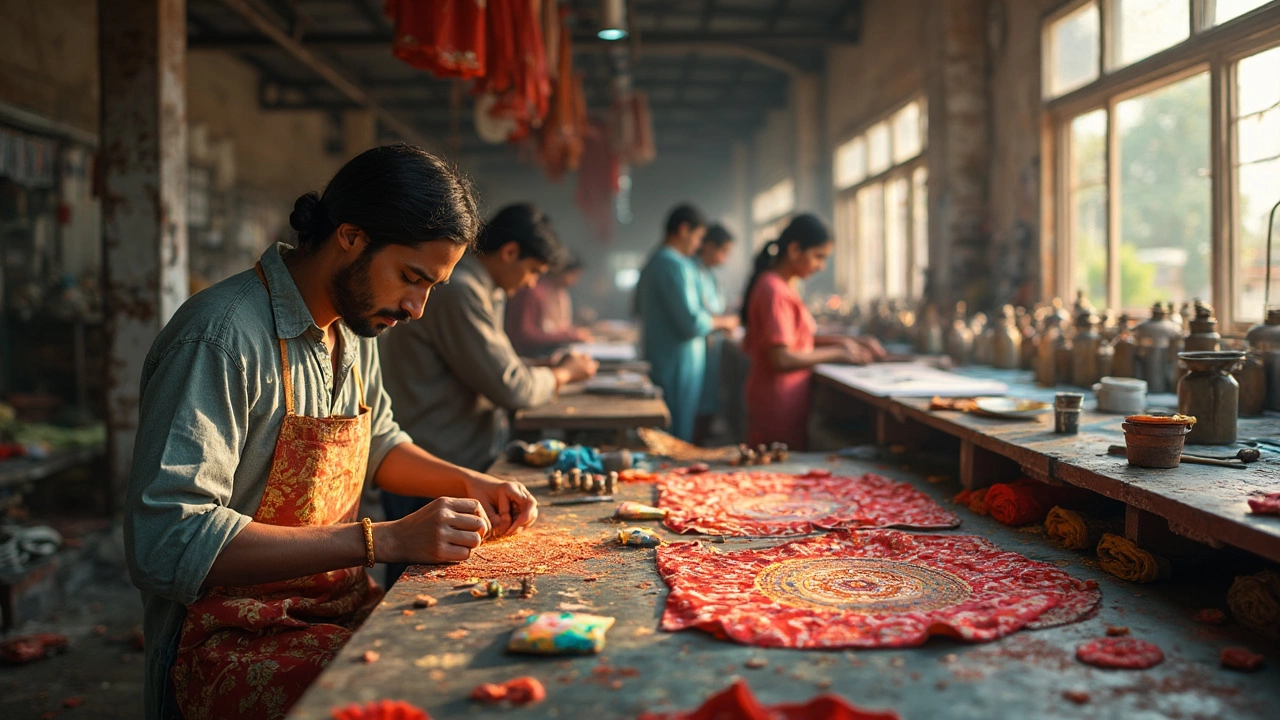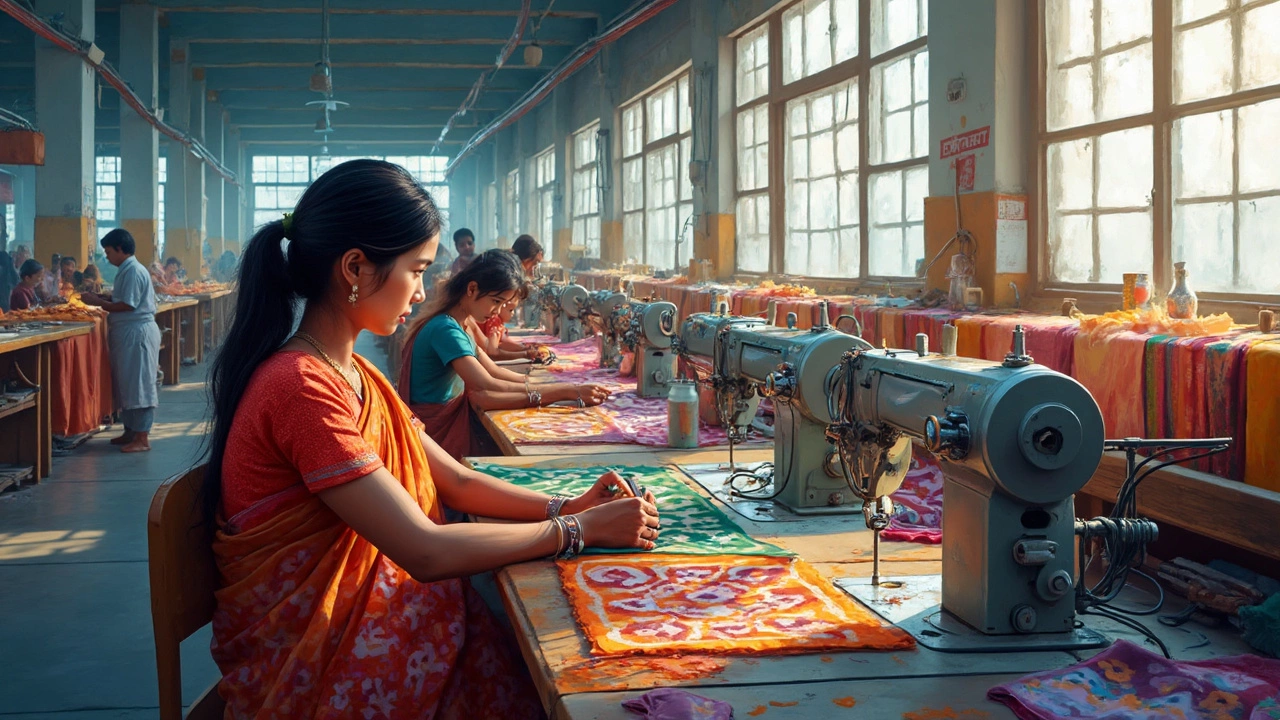Understanding the Three Main Types of Manufacturing

Diving into the world of manufacturing, you'll quickly realize it's not a one-size-fits-all situation. There are three main types you need to know about: custom manufacturing, batch manufacturing, and mass production. Each comes with its own vibe, tailored to varying needs of products and industries.
Custom manufacturing is the go-to for unique, specialized items. Think of a bespoke tailor crafting a suit from scratch—this method ensures a perfect fit for each client's needs. On the flip side, batch manufacturing works like a bakery, churning out batches of products in set quantities. It's a balance between customization and efficiency.
Then there's mass production. Imagine a car assembly line, pumping out thousands of units swiftly and uniformly. It's all about speed and scale. Knowing the right method can save companies time and resources, and that's where understanding these processes really pays off.
- Custom Manufacturing
- Batch Manufacturing
- Mass Production
- Government Role
- Innovations and Trends
- Choosing the Right Method
Custom Manufacturing
Custom manufacturing is like having a personal chef cook up something special just for you. It’s all about creating unique products tailored to the specific wants of a client. This method is commonly used when off-the-shelf solutions just won’t cut it.
In this process, products are often made in small quantities or even individually. While it might sound pricey, the benefits can outweigh the costs, especially if what's needed is a perfect fit or involves intricate designs and high standards.
Why Choose Custom Manufacturing?
The main draw is personalization. Industries such as aerospace, medical devices, and luxury goods lean towards custom manufacturing to ensure precision and quality. It's all about meeting exacting standards and client needs. Plus, it fosters innovation, since designs and specifications can be adjusted easily at any phase.
The Process
Starting off, there's a design phase where client needs are thoroughly assessed. Then, engineers create prototypes which then go through testing. If all checks out, the final product is manufactured.
- Initial Consultation: Understanding client requirements thoroughly.
- Design and Engineering: Tailoring the design to meet demands.
- Prototyping: Developing and testing prototypes to ensure quality.
- Final Production: Manufacturing the final product, often in small quantities.
The Role of Technology
Technology, especially digital advancements, plays a massive role here. CNC machines, 3D printing, and other high-tech tools allow manufacturers to work with precision and flexibility. It's all about making 'impossible' designs doable!
While it can be time-involving, custom manufacturing strikes the right balance when a standard approach just isn’t enough. It's about crafting bespoke solutions in a world increasingly leaning towards personalization.
Batch Manufacturing
Batch manufacturing is where things get a bit more organized but still leave room for flexibility. Picture it like baking cookies. You're not making just one cookie—you're whipping up a batch. It's efficient because you're using the same setup and ingredients to produce multiple items at once.
This production method is particularly useful in scenarios where demand can fluctuate or products need moderate personalization. It's like finding the sweet spot between making a custom suit and mass-producing t-shirts.
How It Works
In batch manufacturing, a production line is set up to produce a specific quantity before switching to another batch. This could mean cranking out 500 units of red shirts, then switching to blue.
The process is broken down into a series of operations, where each step is completed before the next one begins on that batch. It's systematic, yes, but you do get that little bit of wiggle room if a customer suddenly wants something a tad different.
Advantages of Batch Manufacturing
- Flexibility in Production: You can easily switch from one product to another, making it ideal for seasonal items or special editions.
- Cost-Effective: It often requires less initial investment compared to full-scale mass production.
- Reduced Waste: Since products are made in batches, there's less risk of overproduction, which means less waste.
Sure, there's a bit of downtime when switching batches, but that small lull can be a great opportunity to address any snags in the process or even perform routine maintenance. Keeping your machines in tip-top shape means they're ready to rumble with the next batch.
Government Schemes Supporting Batch Manufacturing
Governments globally recognize batch manufacturing’s importance and have set up various schemes to boost this sector. These schemes might include subsidies for technological upgrades or training programs aimed at upskilling the workforce. By supporting batch manufacturing, governments can help companies adapt to changing market demands, ensuring they stay competitive.
Mass Production
Mass production is the heavy lifter of the manufacturing world, responsible for cranking out large quantities of goods at a rapid pace. Picture massive assembly lines, where everything moves like clockwork. This system is all about efficiency, and it's what makes modern consumer society function.
Developed during the Industrial Revolution, mass production gained serious traction with Henry Ford's assembly line in the early 20th century. Ford introduced an innovative approach, significantly reducing the time it took to build a car. It was so effective that by 1913, the time to build a Model T dropped from over 12 hours to just 90 minutes!
Efficiency and Automation
The secret sauce to mass production is automation. Machines handle repetitive tasks, minimizing human error and slashing production costs. Technologies like robotics and AI are pushing boundaries, making this method ever more sophisticated.
| Year | Advancement |
|---|---|
| 1913 | Ford's Moving Assembly Line |
| 1930s | Use of Industrial Robotics |
| 2000s | Introduction of AI in Manufacturing |
This combo of tech and efficiency means prices for mass-produced goods often remain low, a big win for consumers worldwide.
The Role of Government Schemes
Governments have a big part to play here, offering incentives and schemes to support the big players in manufacturing. They help maintain competitive edges through tax breaks, grants, and even infrastructure development. This support can boost production and keep industries thriving.
In short, mass production is a game changer. It's the reason why we can buy a smartphone, a car, or a loaf of bread at such reasonable prices. The benefits ripple through the economy, and government efforts to bolster the industry only amplify those effects. If you've ever enjoyed the perks of affordable goods, you've got mass production to thank!

Government Role
The government plays a pivotal role in shaping the manufacturing landscape. From regulations to incentives, every nook and cranny of the industry feels its touch. Let's break down how this works.
Regulatory Framework
Regulations are a double-edged sword. On one side, they keep things safe and fair, ensuring manufacturing doesn't harm workers or the environment. On the other, they can sometimes feel like jumping through hoops, especially for small businesses trying to keep up with the big dogs.
Incentives and Schemes
To encourage growth, many governments offer nifty schemes. These can include tax breaks, grants, or loans aimed at modernizing equipment or expanding operations. For instance, the Australian government's Manufacturing Modernisation Fund provides small to medium-sized businesses with funding to upgrade their processes, making them more competitive and sustainable.
Supporting Innovation
Governments also back research and development to keep industries ahead of the curve. Innovation is the name of the game, and by funding R&D, governments help foster cutting-edge technology in areas like automation and green tech, staying tuned with global trends.
Challenges
But it's not all smooth sailing. There's often a tricky balance between nurturing local industries and opening up to global markets. Sometimes, policies can shift, and companies have to adapt quickly to new trade agreements or tariff changes.
Stats on Government Support
To provide some perspective, here's a quick look at government support in manufacturing:
| Country | Scheme | Annual Funding (Million USD) |
|---|---|---|
| Australia | Manufacturing Modernisation Fund | 50 |
| USA | Manufacturing Extension Partnership | 140 |
| UK | Innovate UK | 500 |
These initiatives aim to jumpstart progress, especially in the face of increasing global competition in the manufacturing sector.
Innovations and Trends
Staying ahead in the manufacturing game is all about embracing the latest innovations and trends. Today, technology is reshaping how things are made, and it's fascinating to see these changes unfold.
Smart Manufacturing
Imagine factories that think for themselves. That's the essence of smart manufacturing. By integrating sensors and IoT devices, plants can now monitor processes 24/7. The data collected helps optimize production and reduce downtime, making the whole process more efficient.
3D Printing Boom
3D printing is no longer just for prototypes. It's revolutionizing production methods by allowing manufacturers to produce complex parts quicker and cheaper. Companies can now experiment with designs without the hefty costs, and this speeds up the innovation process massively.
Sustainable Practices
With the spotlight on climate change, the push for greener methods is undeniable. Manufacturers are adopting eco-friendly practices, from using renewable energy to recycling materials, aiming for a smaller carbon footprint.
Collaborative Robotics
Also known as cobots, these are robots designed to work alongside humans. They enhance productivity but don't replace the human touch—it's a team effort. Cobots handle repetitive tasks, freeing up humans for more complex challenges.
Overall, these trends are not just fancy buzzwords. They're real changes, actively influencing industry processes. Businesses that jump on board early are likely to reap the rewards.
Choosing the Right Method
Picking the right manufacturing method is like choosing the perfect pair of shoes—it has to fit just right. It depends on your business needs, the product type, the volume you aim to produce, and even the budget you're working with. With manufacturing being such a key part of the economy, getting this right can literally make or break your business in the industry.
Considerations for Selecting a Method
First off, think about the product itself. If you're making something high-end and customized, custom manufacturing is probably where you'll land. For products that need personalization but in limited runs, explore batch manufacturing. If you're all about churning out as many units as possible, go for mass production.
- Product complexity: Complex products often require more sophisticated methods.
- Production volume: High volumes often benefit from mass production efficiencies.
- Budget constraints: Custom work can be pricier than batch or mass methods.
- Time to market: Batch and mass production often get products out faster than custom jobs.
Impact of Government Schemes
Don’t forget to factor in government schemes and policies that might affect your decision. In Australia, the government offers incentives for manufacturers to adopt innovative processes, which can also be a deciding factor. Some schemes even offer tax breaks or subsidies for businesses that focus on sustainable and efficient production methods.
| Production Method | Best For | Challenges |
|---|---|---|
| Custom Manufacturing | Unique, high-quality items | Higher cost and longer production times |
| Batch Manufacturing | Mid-volume, varied products | Balancing inventory and demand |
| Mass Production | High-volume, identical products | Initial high setup costs |
So when you're setting out on your manufacturing journey, remember to weigh these factors carefully. The right method not only streamlines your production process but also optimizes costs and time, ensuring that your business reaps the most reward.

